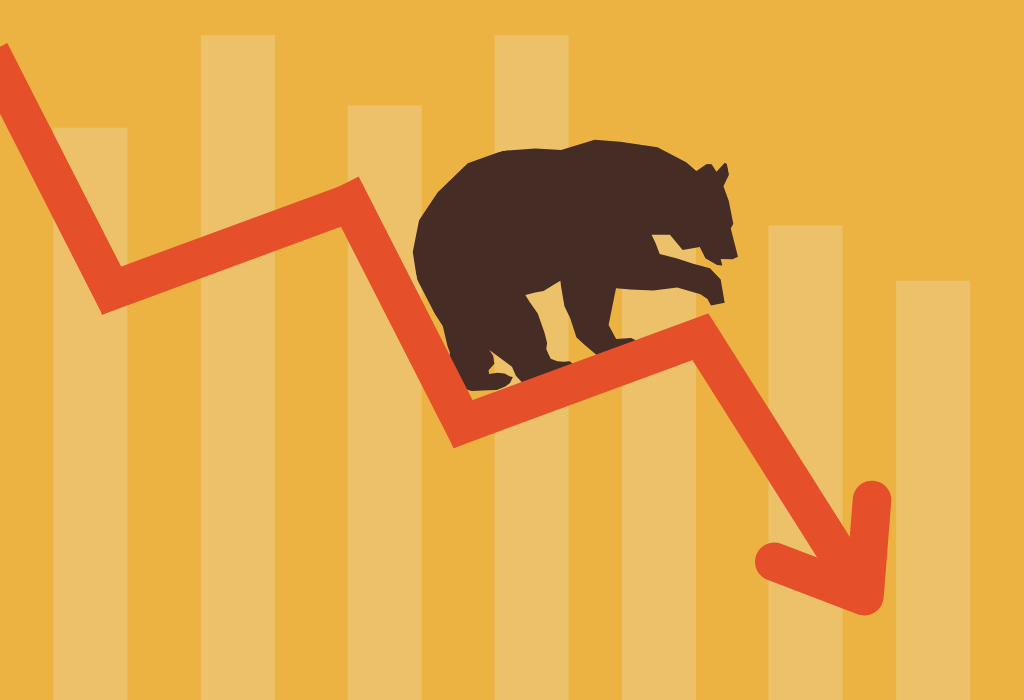Every coin has 2 sides, just like life events can be good or bad. In the same way, stock markets have two main phases – the bull and bear. The stock markets also have ups and downs, it is not always a rosy picture.
Typically, stock markets have 4 stages – accumulation, mark-up (uptrend), distribution, and markdown. The accumulation stage is where many buyers enter the market and purchase shares. It simply leads to an uptrend. Once the stock reaches the top, the distribution stage begins as people begin booking their profits and exiting the market.
There are various other internal (company issues) as well as external factors (change in policies, community sentiments, global risks) affecting and causing the distribution phase to begin. Markdown is when the stock has reached a very low price after distribution.
Worrying about your investments when the markets are down despite having all the information on hand is natural. However, there are ways to cope and make the most of such situations.
Before we get to the ways let us understand the bear mode.
Bear market:
The stock market is in a bear mode when there is a decline in the price during a specific timeframe. Technically a market is in a bear phase when it falls by 20% or more. It usually occurs when the demand is lower than the supply in the market. The bear market affects the aggregate cash flow of the capital sector in the economy.
When a market is bullish, deciding between buying and selling is simple. Although, once the bearish phase begins, the markets become volatile, making investments riskier. Investors have many biases while investing, and it can be stressful if the value of your investment falls. A bear market leads to a slowdown in the economy directly.
There can be many reasons for a bear market. Some of them are-
- Political risks or fluctuation.
- Global issues.
- Worldwide recession.
What to do in a bear market?
As alarming as it is for you as investors to see your portfolio going red, it is crucial to stay calm and look at the bigger picture. Selling at lower prices to avoid further loss is the wrong strategy. Doing so will mean a loss of investment. It is important to stay invested during bear markets and not withdraw money unless needed.
If you are experiencing a bear market, we have some things you can do to keep your investments safe.
1. Dollar-cost averaging:
It is vital to make averaging your friend in a bear market. Your investment automatically averages if you invest systematically in mutual funds or other investment avenues. For example, during a bull market, you can purchase 10 units of stock A, and in a bear market, you can buy 15 units for the same amount. Don’t look at the short-term gains, but keep the long-term in mind. Averaging allows you to accumulate stocks at lower prices in a bear market, as once the phase is over, you will observe a significant rise.
2. Diversification:
Putting all your eggs in one basket is highly risky. That is why diversifying your investment portfolio is crucial. Instead of disengaging from the stock markets, diversifying and investing in various assets is a valuable strategy. For example, invest in dividend stocks during a bear phase when stock prices are low. That way, you can earn through dividends. Also, consider investing in bonds, as usually, they move in the opposite direction of the stock market.
3. Aging & Safeguarding:
While investing, many factors such as income, risk appetite, age, and more are considered. For a young professional, investing heavily in stock markets, taking risks, and even facing losses is manageable. They have the time to re-create the money lost due to various factors, including wrong decisions, bearish markets, etc. For the elderly, having a more conservative investment portfolio is prudent as they do not have the luxury of re-creating the same amount of money. Safeguarding your money and taking risks depends on the investor’s age. A bear cycle will not have a significant impact on a conservative portfolio.
4. Specific sectors:
During a bear cycle, if you wish to invest, look for sectors that are not affected due to the slowdown. For example, in an economic downturn, luxury brands will not be very profitable, but the FMCG sector will always be on the run. Try adding stable assets to your portfolio that perform better during the bear market.
Do not worry when your investment value fluctuates; instead, take stock of your investments and ensure that you have a well-managed portfolio. Keeping the bigger picture visible in the rear mirror always helps, as objects are closer than they appear. The objective here is successful investments and a lifetime of profits.
How useful was this post?
Click on a star to rate it!
Average rating 0 / 5. Vote count: 0
No votes so far! Be the first to rate this post.

